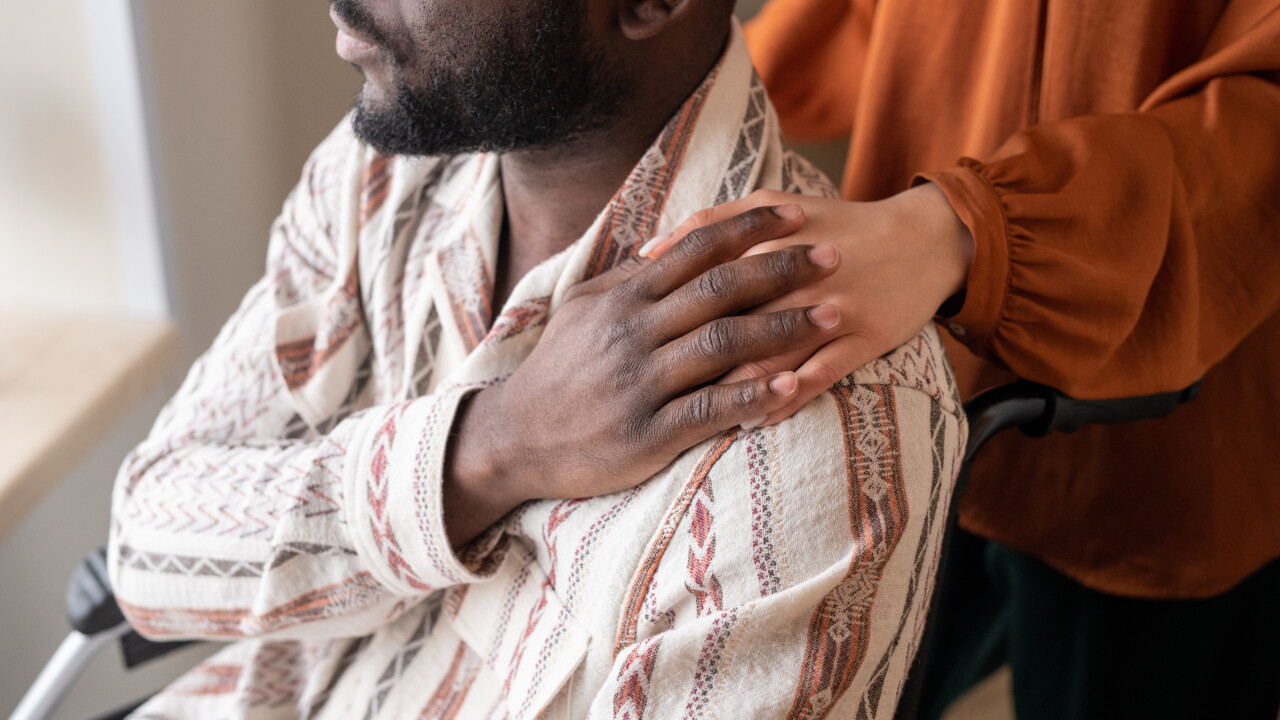
Blog Post
Written by Tom Chiodo Contributor Developing documentaries & special projects for public media.
Dec 24, 2024 Forbes.com

The U.S. corrections system faces a health care crisis as the population ages rapidly, offering a troubling glimpse into the challenges facing the nation as a whole. By 2050, the U.S. population of older adults is projected to increase from 58 million in 2022 to 82 million in 2050—a trend already evident in prisons. Between 1999 and 2016, the population of incarcerated adults ages 55 and older increased by 280%, while the number of younger adults increased by only 3%. Since then, the number of older residents continues to grow. The ACLU estimates that seniors will make up 1/3 of the total prison population by 2030.
As the demographics of the carceral system, and the country, change, institutions will be forced to adapt to meet the unique needs of their aging populations. While some prisons have taken steps to provide hospice and palliative care to a limited number of residents, many facilities are not equipped to care for a high volume of older adults, a report from the Office of the Inspector General confirms. Compassionate release and medical parole are an option for the select few who qualify, but these programs are often underutilized and difficult to navigate. In response to these challenges, some non-profit organizations have stepped up to fill the gaps in care for incarcerated people, while state and federal governments work to create long-term change. The Humane Prison Hospice Project created a unique model that could mediate the growing care crisis in prisons over coming decades. Humane trains residents to serve as hospice and palliative caregivers and grief companions to their aging and dying peers. This cost-effective and humanitarian approach benefits caregivers, care recipients, medical staff, and the facilities that implement it, and could serve as a scalable model for addressing the needs of aging adults in the broader community.
Prisons can be generally unhealthy places for people of all ages due to several environmental and systemic factors, but older adults are particularly vulnerable to poor mental and physical health outcomes. Incarcerated individuals over the age of 50 are more likely to be diagnosed with dementia and other mental health conditions than their non-incarcerated peers. Older residents also experience chronic conditions at higher rates than younger residents, and many are diagnosed with comorbid physical and mental health conditions. Incarcerated people with chronic conditions are not always granted medical exemption from mandated labor and can be required to work in hazardous environments without accommodations.
Incarcerated individuals in the U.S. have a right to adequate healthcare, upheld by the Constitution, but older residents require more extensive, and more expensive, care than their younger counterparts. The U.S. Government Accountability Office reports that the Federal Bureau of Prisons spent over $9 billion on health care between 2009 and 2016, citing the aging inmate population as one of the key factors that contributed to these costs. In Texas, costs to incarcerate older adults increased by over $250 million between 2012 and 2019.
These funds go toward providing medical care to elderly and sick residents, which requires increased staffing, and making facilities more accessible for those with limited mobility. The California Medical Facility in Vacaville, VA, opened the first prison hospice unit in 1993. The hospice was originally built to care for incarcerated people dying of AIDS, but in recent years, the unit has transitioned to serve the needs of the facility’s aging population. The state penitentiary in Oak Park Heights, Minnesota recently expanded its transitional care unit to meet the needs of its aging population. The unit offers 24-hour nursing care and a clinic where patients can receive dialysis, among other medical treatments. Other state departments of corrections have established “prison nursing homes” at certain facilities. However, these existing units are not able to house all the incarcerated individuals who need extensive care— the CMF hospice has only 17 beds. Despite increases in spending on healthcare, the majority of prisons in the United States do not offer hospice programs; of the more than 1,566 state prisons across the country, 75 offer hospice care.
Peer caregiving can transform the way aging and dying residents receive care in prisons across the United States, while lowering costs for facilities and providing a range of benefits to residents and staff. During the pandemic, the team at the Humane Prison Hospice Project developed a new curriculum in collaboration with Dr. Michele DiTomas and her colleagues at California Correctional Health Care Services, to bring their peer caregiving model to the California Medical Facility and the Central California Women’s facility. As part of this new program, volunteers must complete a 15-module course on hospice and palliative care, with a focus on the lived experiences of a prison population. Peer caregivers then work alongside other medical staff as part of a multidisciplinary team to address the health care needs of an aging population and occupy the space between residents and staff to advocate for the needs of care recipients. The program builds upon established communities within prisons, which allows individuals to receive care from people that they trust. “What we’ve found is that there are communities of care in many prisons across this country,” shares Laura Musselman, Director of Communications at Humane. “There are people who have banded together to take care of each other. And those pre-existing communities of care is where we start.”
The peer caregiving approach alleviates the burden on medical staff who are often overworked and under resourced, while creating a supportive environment for all members of the prison community. “Even small acts of compassion build up over time and can help build more of a culture of empathy and respect,” Musselman reflects. “The hope is that [this program] has the potential to influence attitudes and behaviors and health outcomes institution-wide.”
Humane has helped support the establishment of hospice and palliative care programs at 5 prisons across California, training 118 peer caregivers, and they are currently working to expand their care model to be used in other states. Each facility is unique, and there is no “one size fits all” approach to care. The Humane model requires involvement from community members and local organizations to create a program that meets the needs of their specific population.
To establish a peer caregiving program at a facility in your area, Humane recommends the following three steps as a starting point:
There is more work to be done to address the healthcare crisis facing older adults in prisons, and once they are released. The task may seem daunting, but community care models provide a human-centered that can fill certain gaps in palliative and hospice care for both incarcerated adults and their non-incarcerated peers.
To learn more, visit humaneprisonhospiceproject.org.
Follow me on LinkedIn.

Tom Chiodo Executive producer Special Projects, National Productions at WETA, flagship PBS station in Washington D.C., developing primetime documentary films and original digital content, accompanied by national impact and engagement campaigns, for 330+ PBS stations. Recent projects include: Ken Burns presents Hiding in Plain Sight: Youth Mental Illness (2022); and Emmy-nominated documentary The Gene: An Intimate History (2020). More than 30 years experience in media, communications, television, and entertainment industry. Senior positions at Entertainment Industry Foundation, Rubenstein Associates, U.S. Department of Health & Human Services, and Massachusetts Department of Public Health. Co-author “Home Care for Respirator Dependent Children” New England Journal of Medicine. Contributing writer Forbes.com. 2023 judge for National Academy of Television Arts & Sciences News & Documentary Emmy Awards.
The Well Beings Blog supports the critical health and wellbeing of all individuals, to raise awareness, reduce stigma and discrimination, and change the public discourse. The Well Beings campaign was launched in 2020 with the Youth Mental Health Project, followed by the 2022 documentary series Hiding in Plain Sight: Youth Mental Illness (Now streaming on the PBS App), and the upcoming 2025 series, Hiding in Plain Sight: Adult Mental Illness, produced and directed by Ewers Brothers Productions, executive produced by Ken Burns, and presented by WETA, the PBS flagship station in our nation’s capital.
You are not alone. If you or someone you know is in crisis, whether they are considering suicide or not, please call 988 or the toll-free National Suicide Lifeline at 800-273-TALK (8255) to speak with a trained crisis counselor. If you don’t want to talk on the phone, you can also text. Crisis Text Line offers free mental health support. Text “10-18” or “SCRUBS” to 741741 for help. The call and text lines are open 24 hours a day.
Support Provided By
Support for Caregiving is made possible by Otsuka America Pharmaceutical Inc.; OneAmerica Financial Foundation; Comfort Keepers; CareScout Holdings, Inc.; Cherish Health Inc. dba Cherish; Care.com; Evelyn Y. Davis Foundation; Richard King Mellon Foundation; The Arthur Vining Davis Foundations; Ford Foundation; Ralph C. Wilson, Jr. Foundation; NextFifty Initiative (Next50); National Alliance on Mental Illness (NAMI); PATH Foundation; Care for All with Respect and Equity (CARE) Fund; The John A. Hartford Foundation; and the Corporation for Public Broadcasting.
Outreach and Engagement Partners
National outreach and engagement partners for Caregiving include Rosalynn Carter Institute for Caregivers; Grantmakers In Aging; Milken Institute | Future of Aging; Global Coalition on Aging; Elizabeth Dole Foundation; National Partnership for Healthcare and Hospice Innovation; National Minority Health Association; Fred Rogers Productions; Caregiver Action Network; The Coalition to Transform Advanced Care; American Association of Caregiving Youth; Caring Across Generations; SHRM and SHRM Foundation; National Alliance for Caregiving; Lutheran Services in America; Center to Advance Palliative Care; PEOPLE; and Forbes.com.
Caregiving is a Production Of
Lea Pictures and WETA Washington, D.C., in association with Ark Media. For Ark Media, Chris Durrance serves as Director and Senior Producer; Barak Goodman is Series Producer; and Ruth Fertig is Producer. Executive Producers for Lea Pictures are Bradley Cooper and Weston Middleton. Executive Producers for WETA are John F. Wilson and Tom Chiodo. Producer for WETA is Kate Kelly. Production is managed for WETA by Jim Corbley. Consulting Producer is Paul Irving.
WellBeings.org is a health and wellness resource, not a crisis or suicide response website. If you are in crisis, or experiencing thoughts of suicide, please call or text the 988 Suicide & Crisis Lifeline at 988 or the LGBT National Hotline at (888) 843-4564. The service is free and available 24 hours a day, seven days a week.